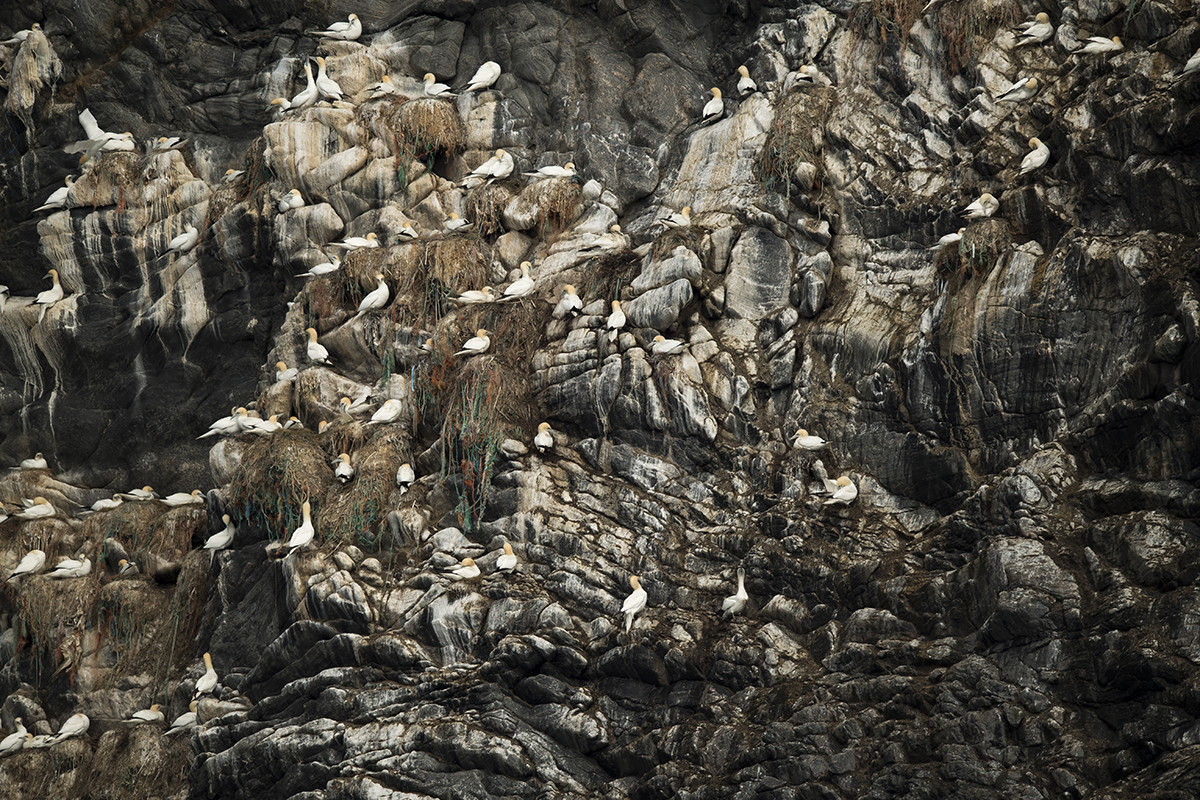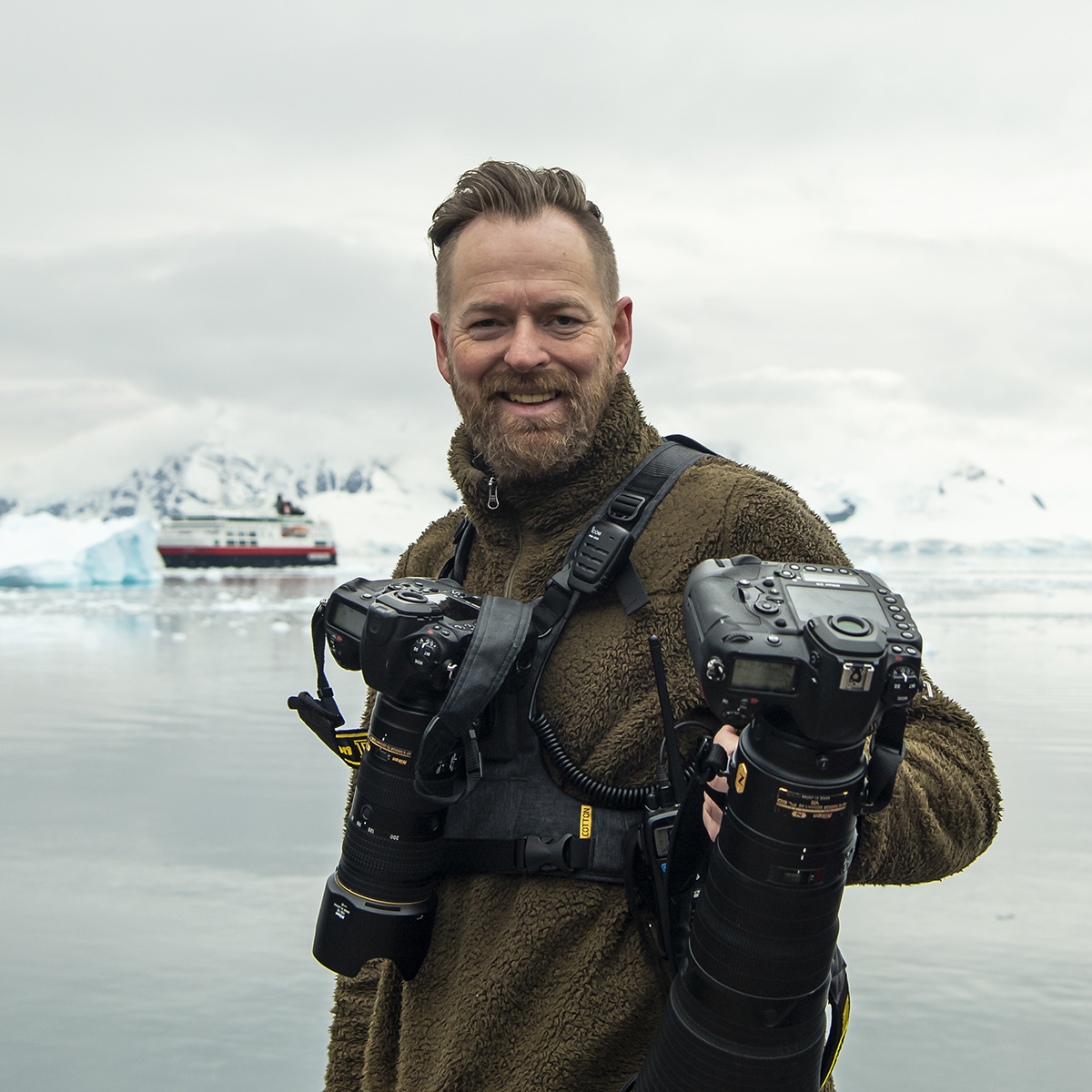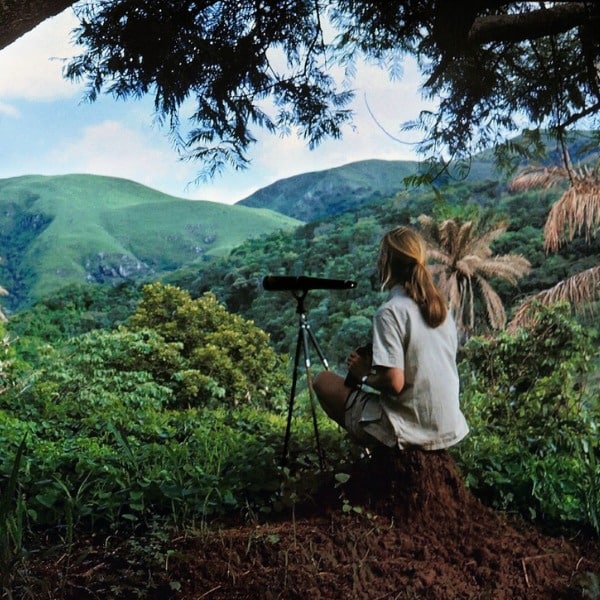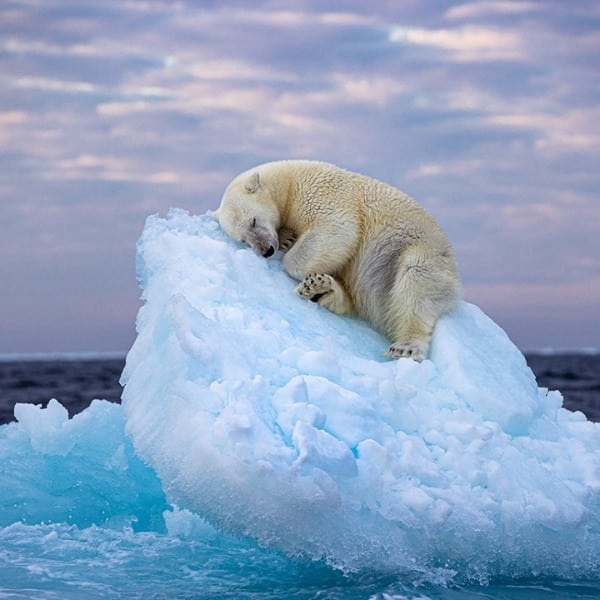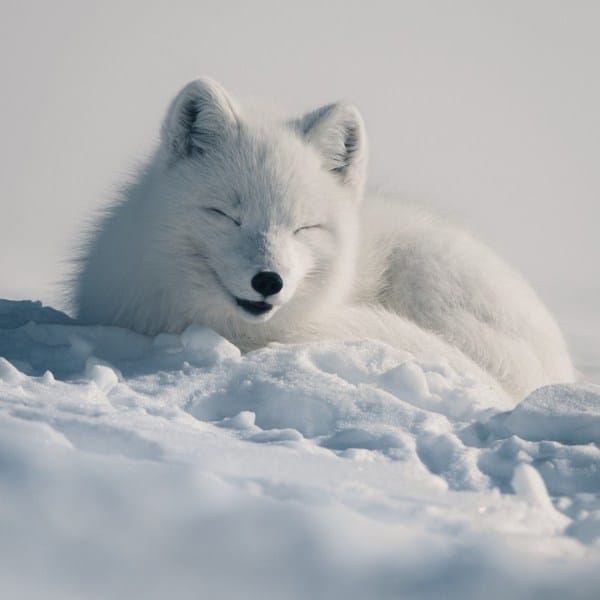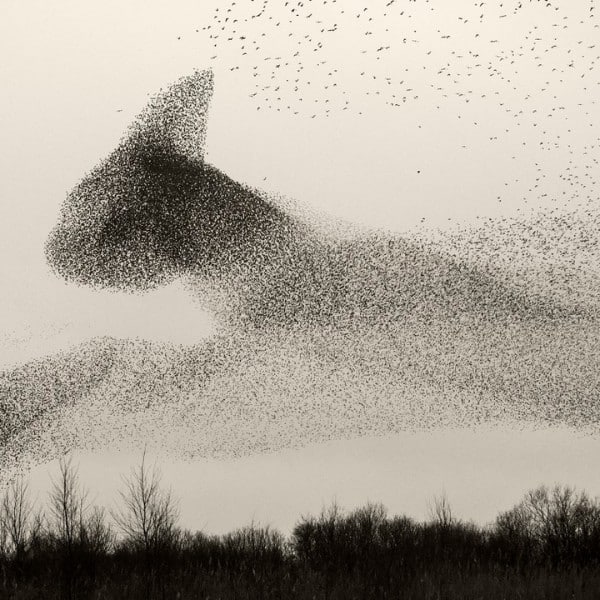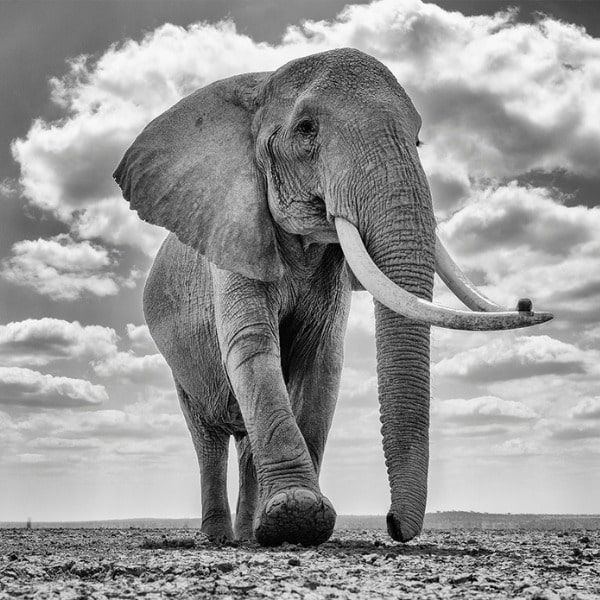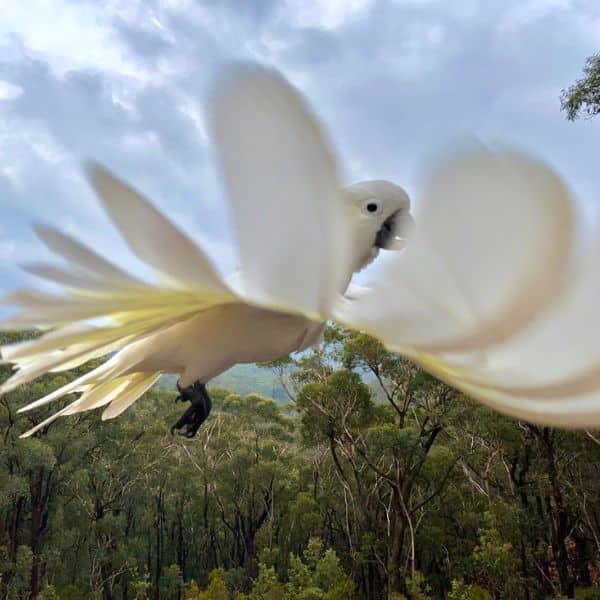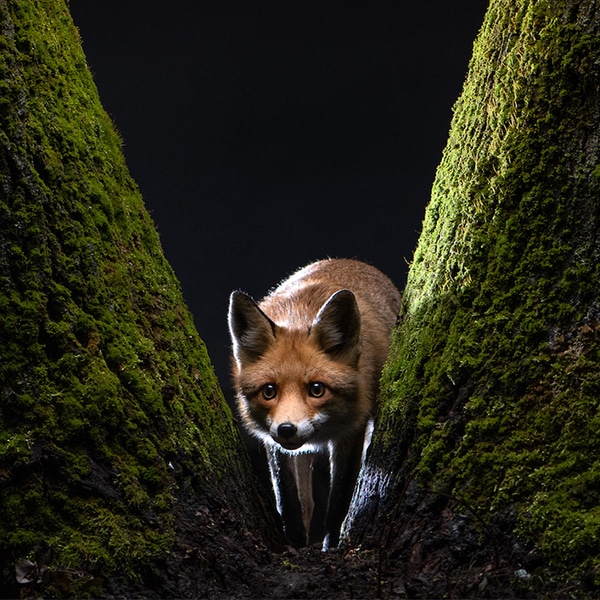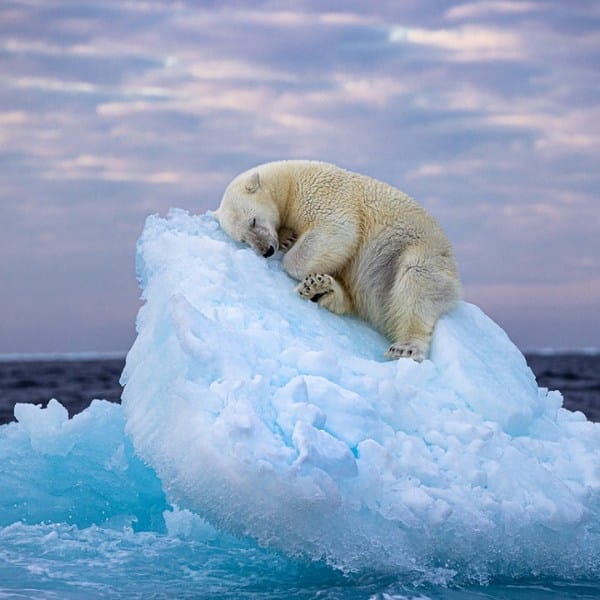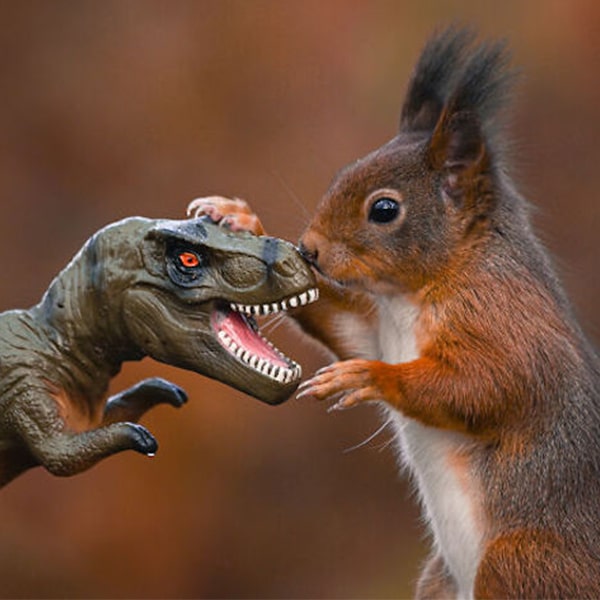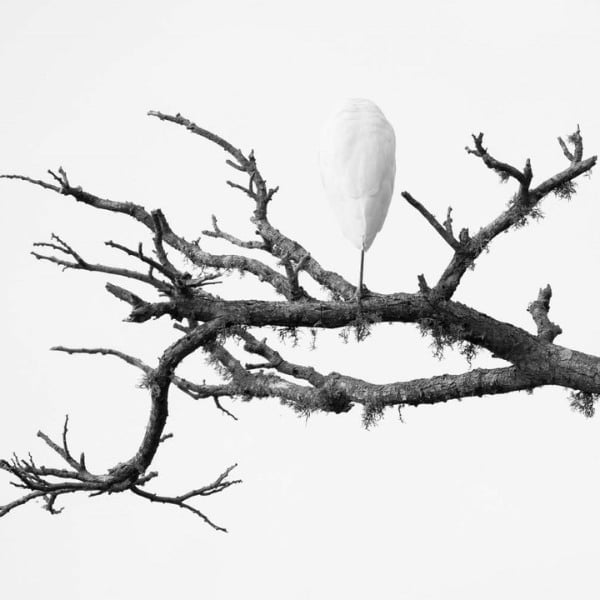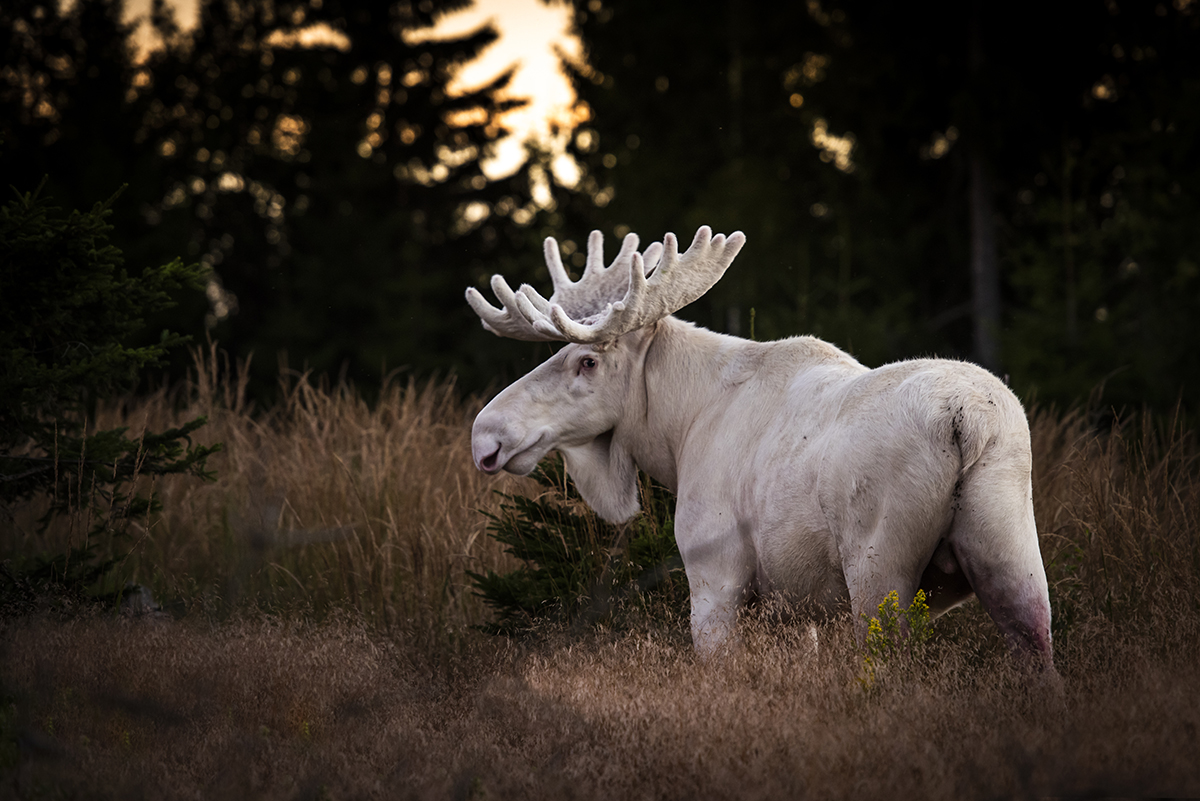
A beautiful white moose has been spotted roaming the forests of Sweden along the Norway border. Wildlife photographer and Nikon Ambassador Roger Brendhagen happened to catch this rare creature on camera in its beautiful natural surroundings. The experienced Swedish photographer is no stranger to encountering unique wild creatures; he has spent his career documenting the beautiful, unusual, and endangered species of habitats around the world. His incredible images of the white moose in the region of Värmland offer insight into a majestic forest world.
The magnificent giant, which may be confused for an albino moose, actually has a genetic condition known as piebaldism. These rare moose have been spotted in Canadian and Swedish forests in recent years. Researchers in Scandinavia have even speculated that the population of white moose may be increasing in recent years due to fewer predators. Perhaps hunters choose not to target these special animals—in Canada, one legally cannot hunt them.
When Brendhagen came upon the moose, he was well prepared by years of photographing elusive wildlife. Working with the WWF, the photographer hopes to use his work to bring awareness to conservation efforts—particularly in Scandinavia. His photographs of the northern gannets of the Isle of Runde aim to draw attention to the dangers of trash polluting our oceans and, by extension, endangering the birds who scavenge trash to build their nests. Arctic foxes are also a species which fascinates Brendhagen with respect to photography and conservation. The foxes are currently under great pressure in Norway and Sweden, where captive breeding programs are attempting to slowly rebuild wild populations.
My Modern Met had a chance to chat with Roger Brendhagen to learn more about the white moose, his wildlife photography, and what it means for conservation in Scandinavia. Read on for our exclusive interview, which has been edited and condensed for ease of reading.
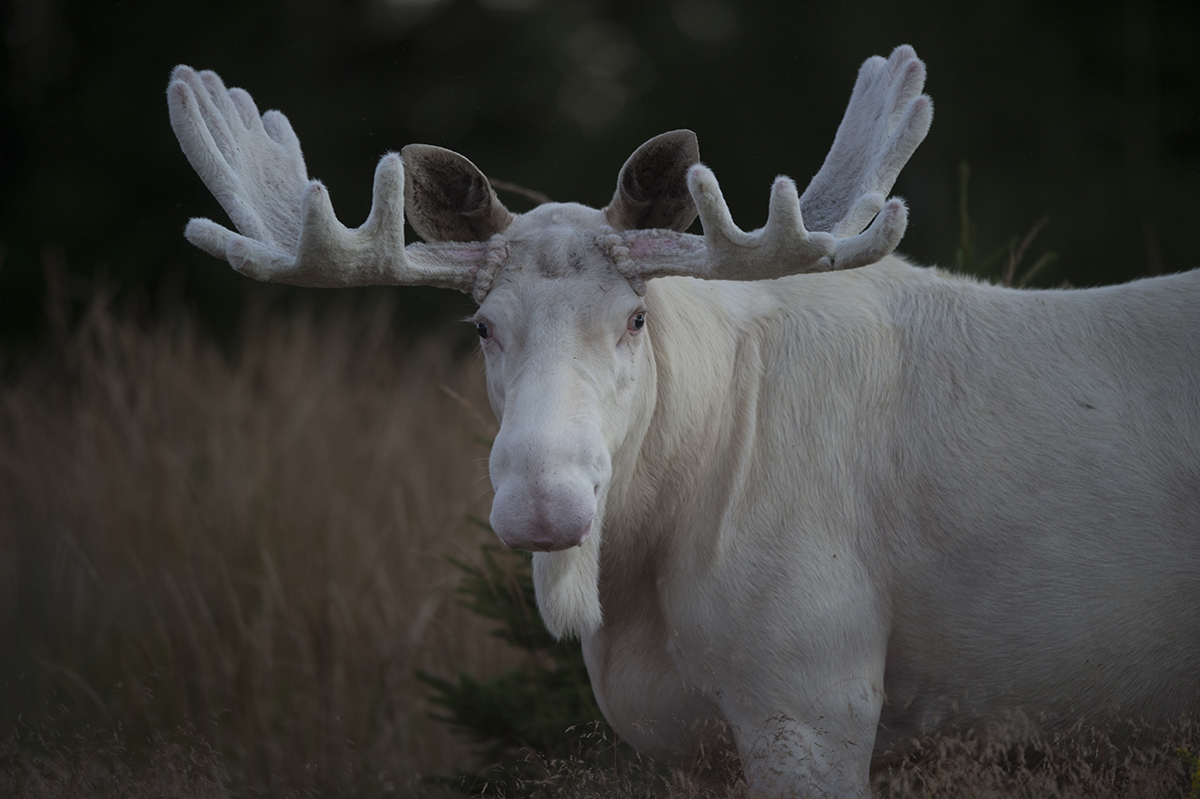
What can you tell us about this remarkable white moose you were able to photograph?
I have met thousands of moose in my life; but when I met this guy in the Swedish forests, I almost lost my senses! Thank God I did not lose the camera…
I photographed this moose in Värmland in Sweden—in the border area with Norway. According to researchers, there are about 30 moose with this mutation in Värmland. The legendary white moose first appeared in western Värmland sometime in the 1930s. They are not albino, but they have a defect in the genetic code which means the coat does not store pigment. The phenomenon is called leucism. They have brown eyes—and the horns are also brown like a normal moose.
Leucism is a congenital physical condition in animals reminiscent of albinism and melanism. Leucism leads to reduced pigmentation and is defined as a partial or complete deficiency of eumelanin or pheomelanin in the skin, often called a genetic blockage or obstruction in fur or plumage. This means that the animal can become lighter, partly white, or completely white in color. However, eyes, beak, and claws often have normal pigmentation in contrast to albinism.
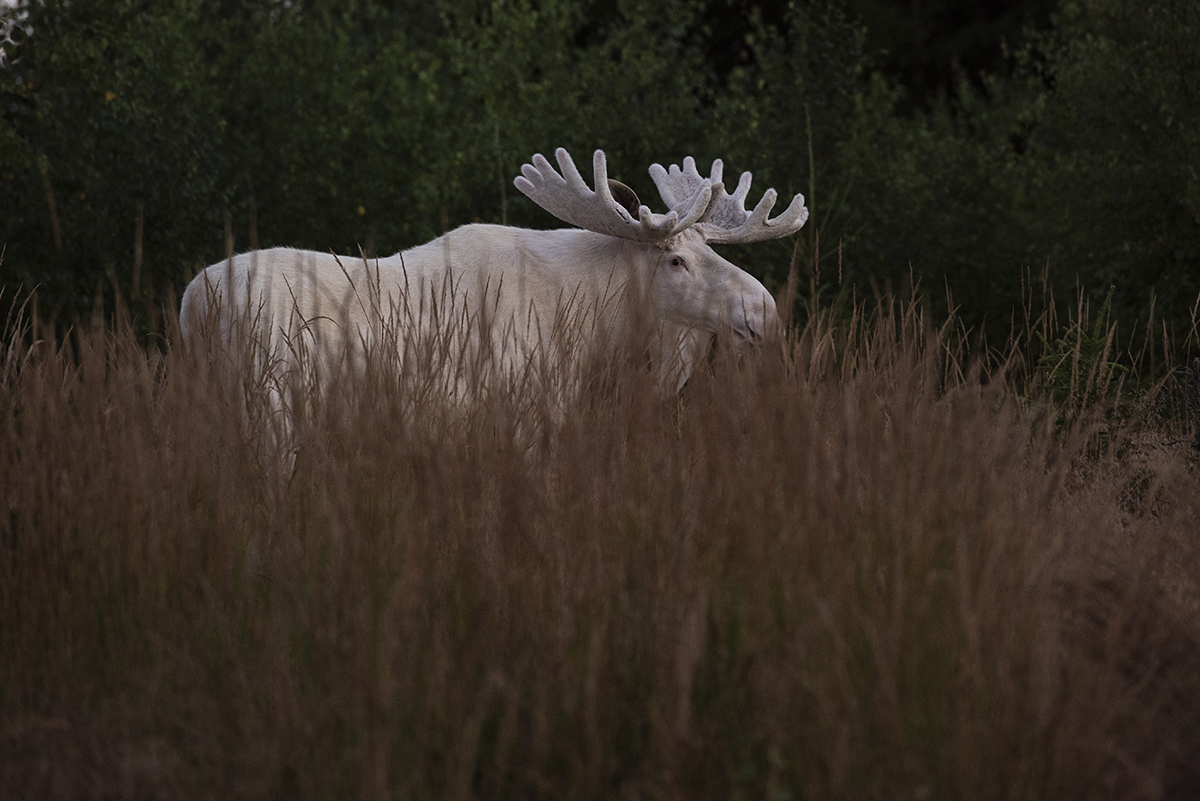
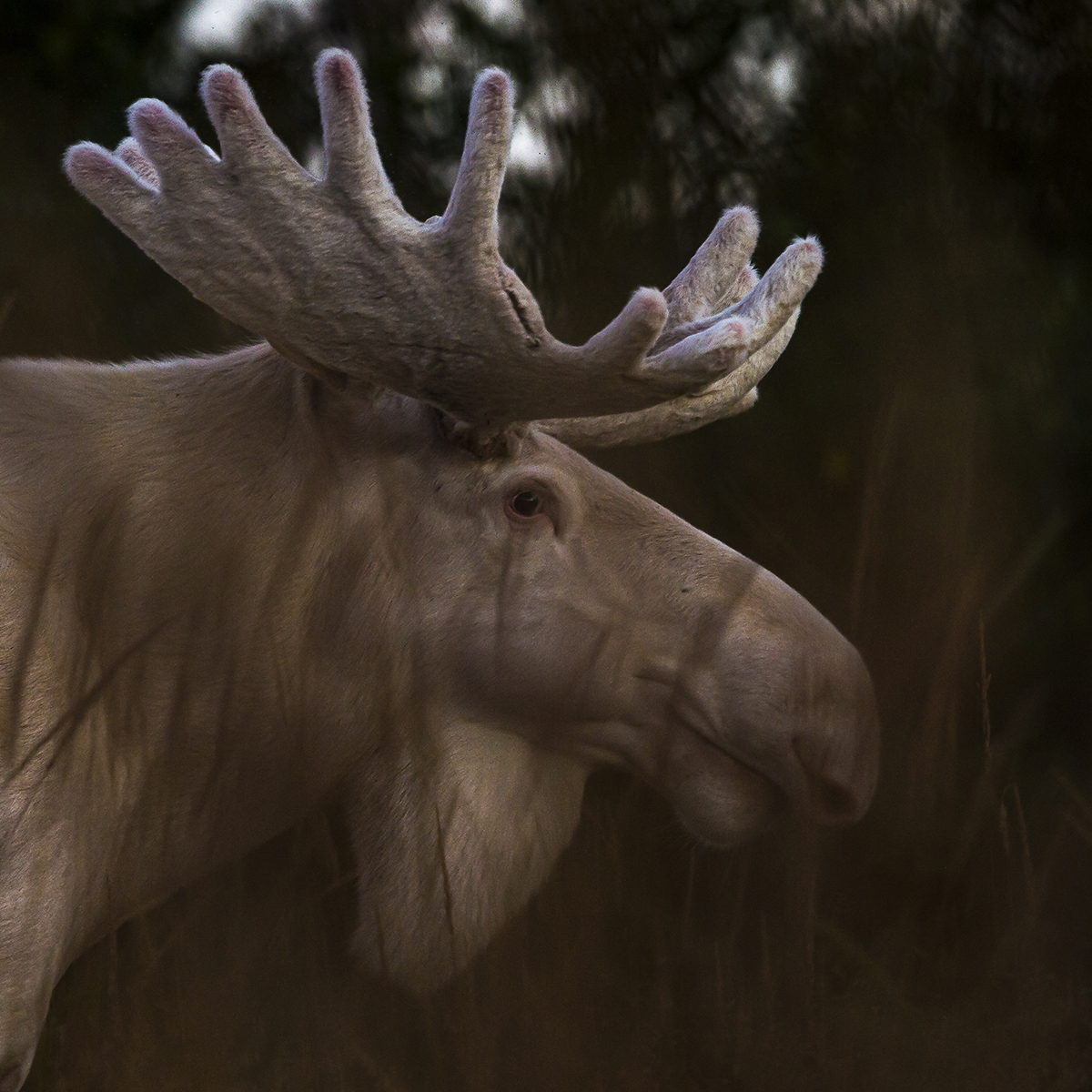
When you are out photographing wildlife, how do you approach the animals with your camera to get the shot without scaring the creatures?
Keep the distance. It’s a dilemma to photograph wild animals—for example the Arctic fox. As a photographer, you want to come as close as possible, and the foxes wants us as far away as possible. Therefore it becomes an important reflection for us photographers on how close to get, and how long a time we stay nearby the fox dens.
At several of the most famous dens sites, there has been a large amount of nature photographers who have stayed in tents only meters from the dens, and spend several days in the same area. It is important to inform each other about where the boundary is between observing and invading. I think it's better to come up with meaningful advice, rather than [shaking an] index finger by extension at the social media.
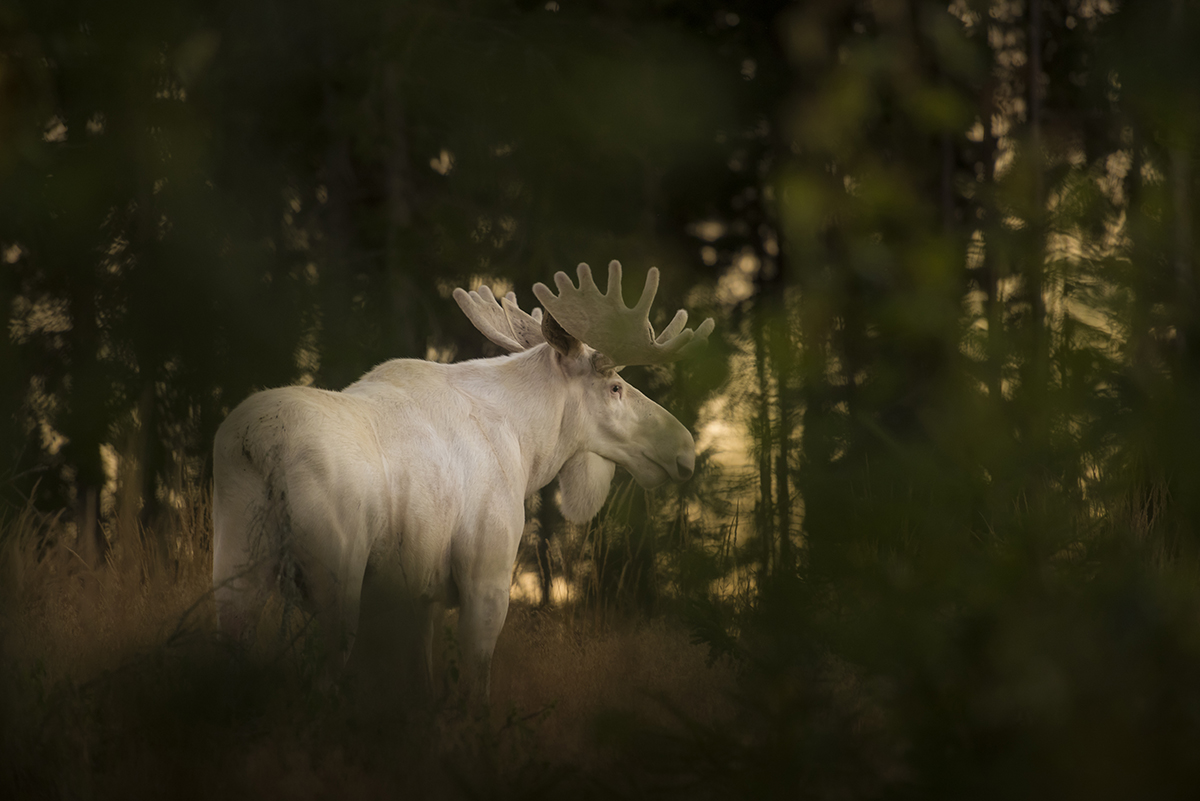
Can you tell us about your photos of Arctic foxes?
The Arctic fox is one of Norway's most endangered mammals, and is listed as critically endangered in the Norwegian Red List. Therefore, it is a blessed experience to see them in the mountains.
Some of the Arctic fox habitats I have visited are a few hours' walk from the nearest car park. As I like to have a low perspective, I let my tripod stay in the car for four reasons. 1) The photo bag is heavy enough as it is. 2) The low perspective mentioned. 3) If I had to stand on the mountain plateau with a tripod, I'm visible to other mountain hikers—and the chance of a visit of hikers is increasing. 4) But the main reason is that the Arctic fox will not see me. That's why my camouflage is my best friend—in addition to a 600mm and 800mm! I use a camouflage called Jervenduken. It is a Norwegian brand and it’s water proof, wind stopping, and with a good isolation.
A date I will always remember—September 19, 2019. Inside my head there are many pictures. Some of them I have taken, yet others have not yet “come out.” After 10 years of waiting, I got my reward. The picture I was dreaming about was the Arctic fox under the full moon, or “in it” if you like. I haven’t been at the mountains of Dovre every time it has been a full moon, but there have been many hit and miss trips in the 10 years I've tried. Sometimes the weather forecast reported nice conditions and a clear sky. After 400 kilometers in the car, I often reached the mountains in low clouds and a foggy weather. Most of the time the conditions were great, but then the Arctic foxes were missing…
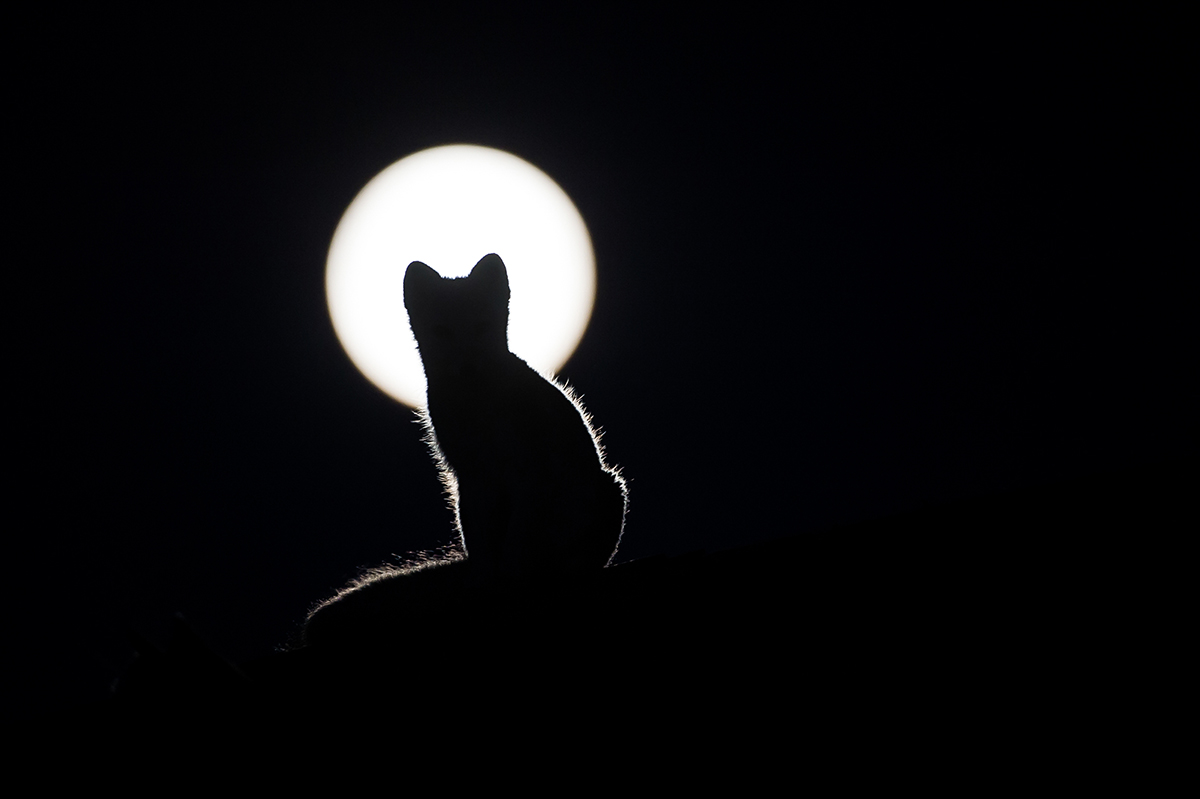
Brenhagen’s once-in-a-lifetime shot of an Arctic fox with a full moon.
What camera and equipment do you prefer to shoot with?
I have been a Nikon Ambassador for the last 14 years, and I have “everything” that Nikon has ever produced—including the Nikon D6 and Nikon D850 with a variety of lenses, flashes, and filters.
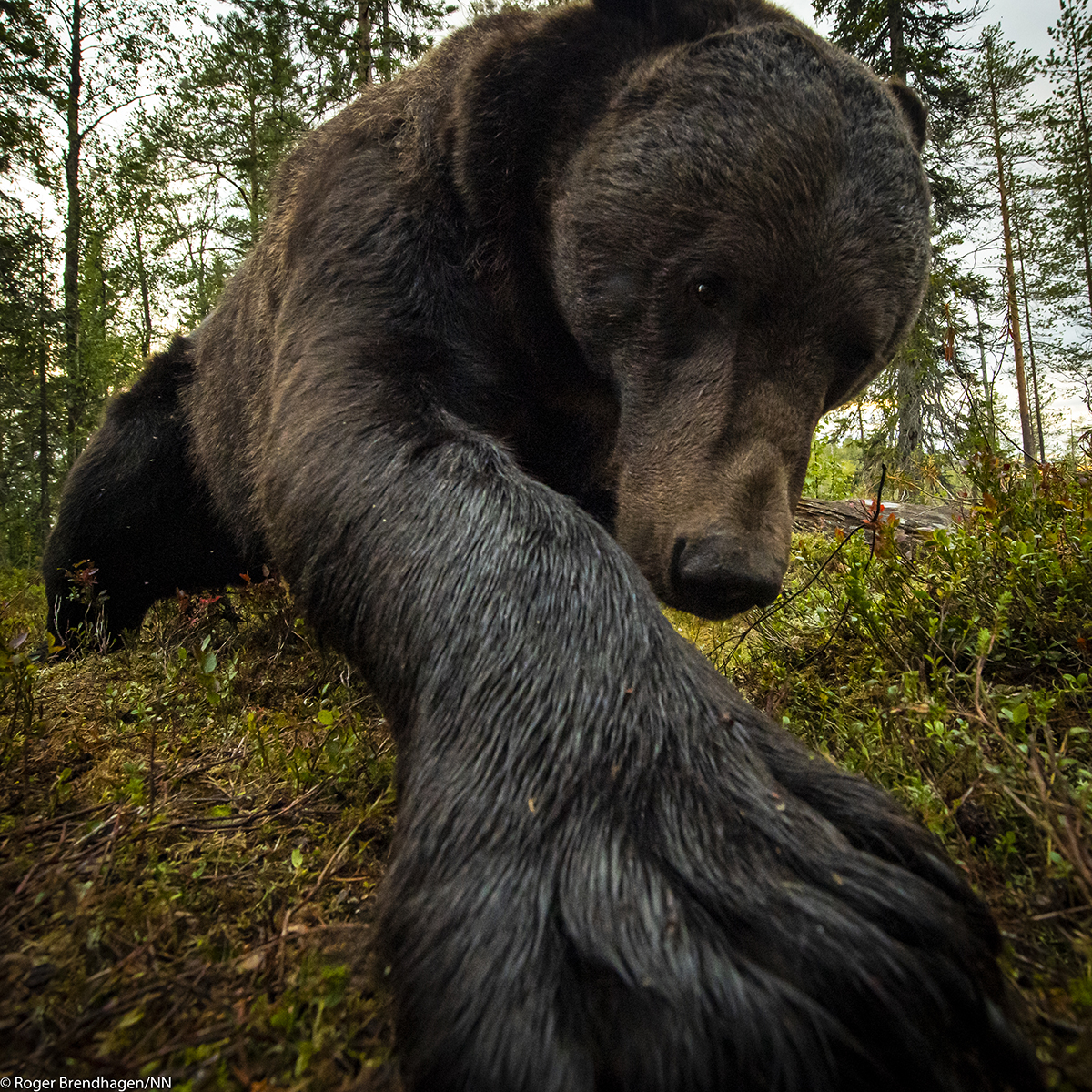
You also work with the WWF. What do you hope people take from your wildlife photography, in terms of conservation?
On the Isle of Runde on the West coast of Norway, the northern gannet—Morus bassanus—has found perfect conditions for nesting for decades.
In the last 10 years, we have seen that they use more and more garbage as materials to build their nest. They use old fishing nets, ropes, and other things that they can find floating in the ocean. I’ve been there for a couple of weeks every year for the last five years to photograph the wildlife and to follow this tragic development for the northern gannet. Sadly, it gets worse every year. I was there a couple of weeks ago and saw that the nests are even bigger than they were last year, with colorful crap from people that should know better than to throw old fishing nets over board from boats! I have published some stories recently regarding this problem, and the best way to reach out to the public is to show pictures that tell the story. And my pictures from the Isle of Runde do that!
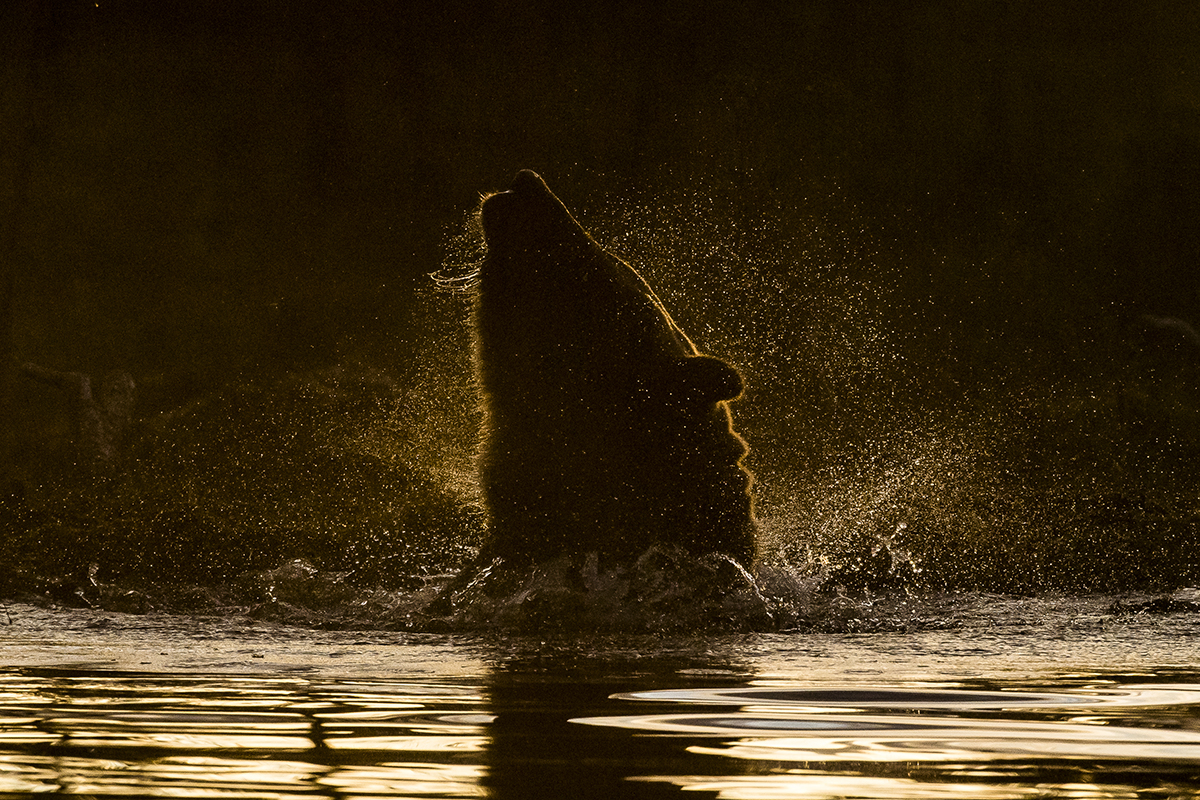
(continued) The Isle of Runde is a quite small island, approximately 6,000 meters long and 2,000 meters wide. The cliff where the birds’ nests are is 300 meters above sea level. The weather conditions are harsh with strong winds and heavy ocean currents. To take photos of the nesting area, I have to use a boat and 600mm and 800mm teleoptics, for my own security but mostly for that of the birds. I don’t want to disturb them in these vulnerable times of the year. 50% of the time, it’s too dangerous to go out in the boat because of the weather conditions!
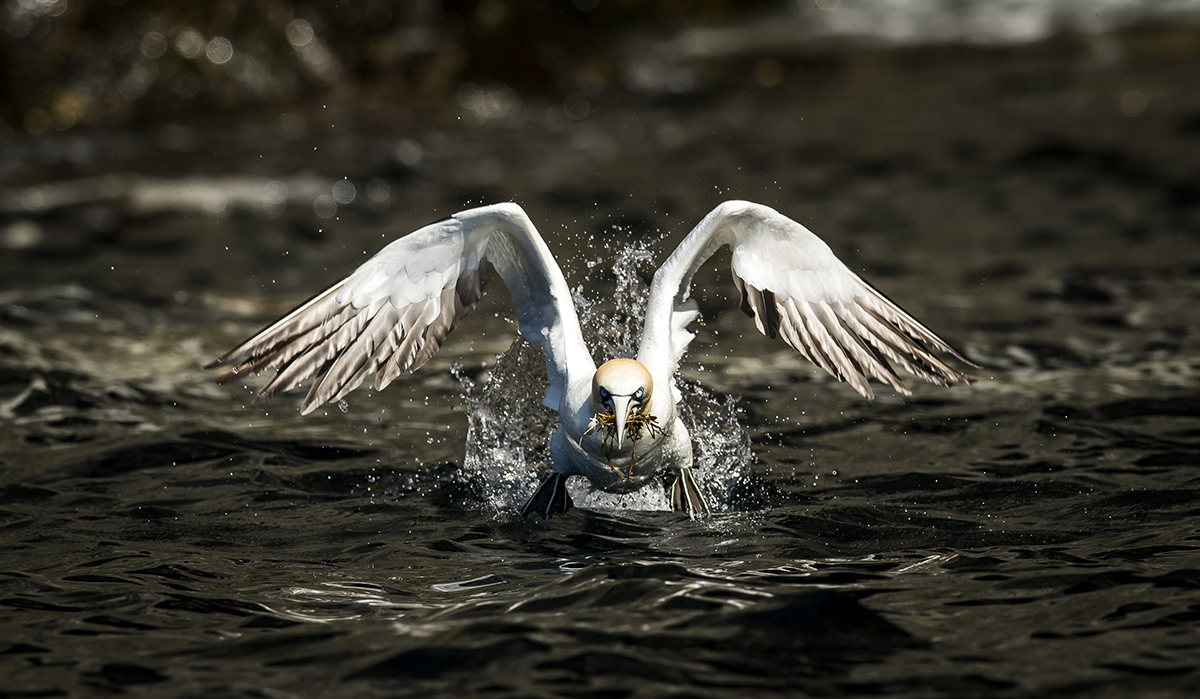
(continued) I hold between 80 and 100 lectures every year, where I show pictures from my photo expeditions from all over the world and, of course, tell my story from the Isle of Runde and other places that struggle from human waste. Some readers ask me why it is a problem that the birds are using garbage and fishing nets in their nest. The answer is cruel. I saw some birds that were stuck in their own nest, and it will be an even bigger problem for the young chicks when they come out from their eggs in a few weeks. The plan is to go back again in the middle of June to document that tragic event.
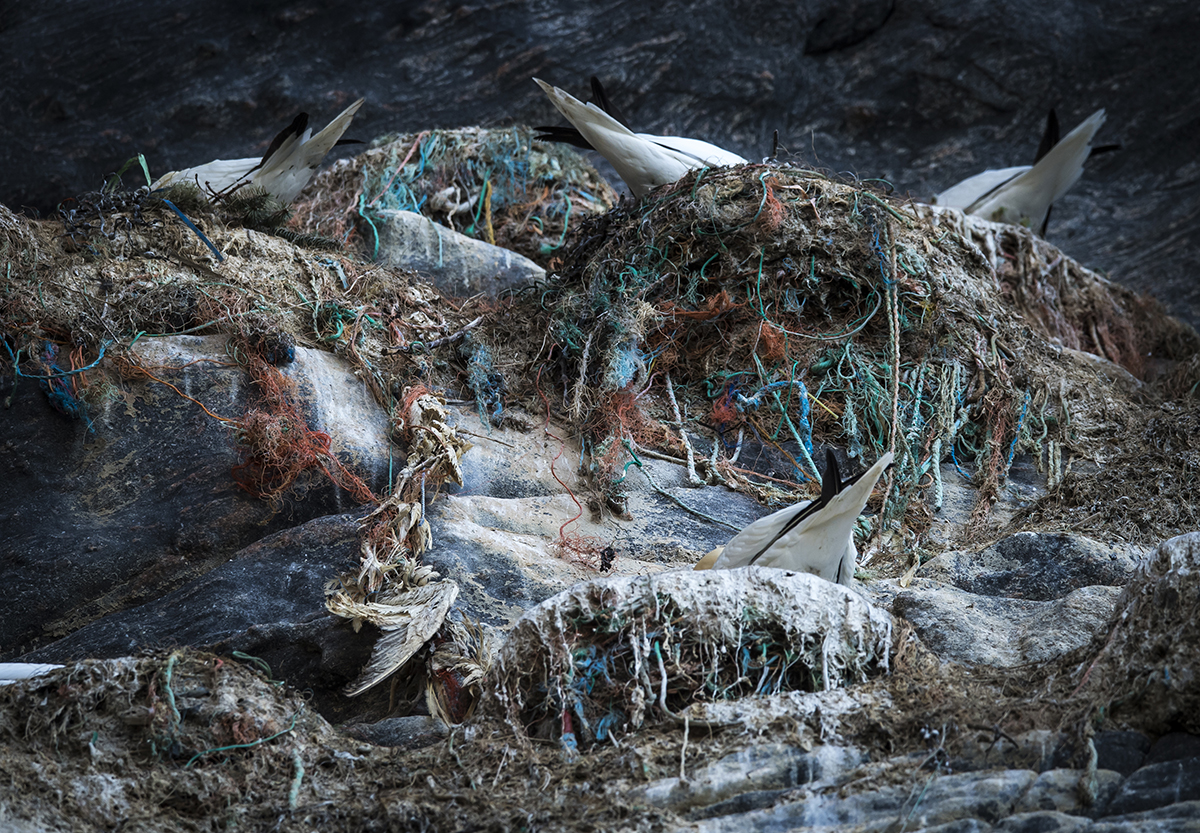
(continued) I will continue my work on this island to capture the beautiful landscape, the birdlife, and the sad story behind what’s happening with the garbage that so many people still throw in the ocean. My hope is that my pictures will help people to create a new attitude regarding this huge problem.
